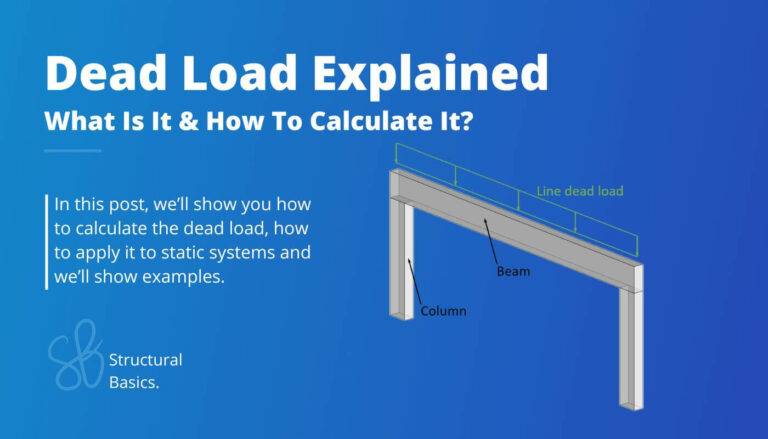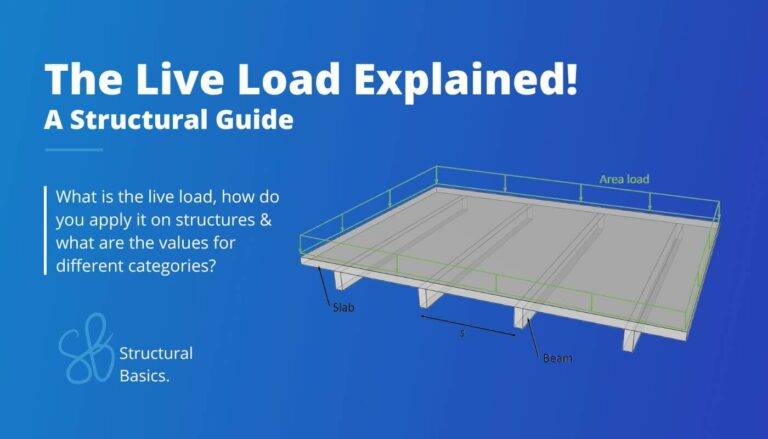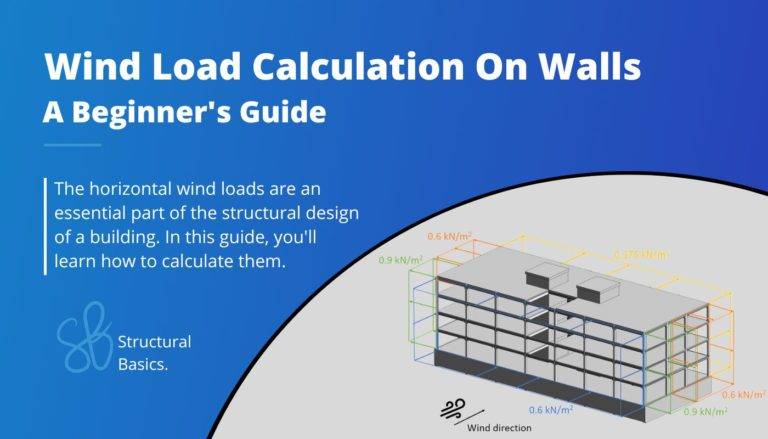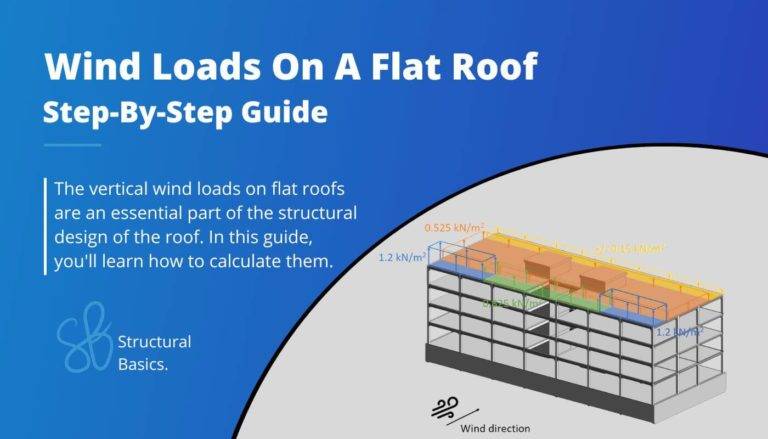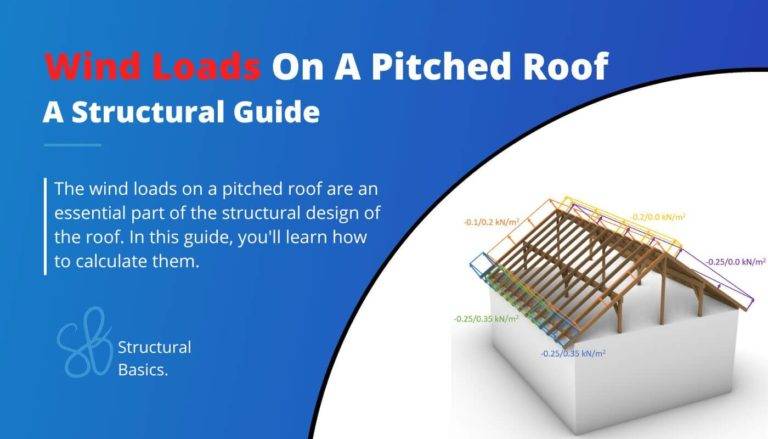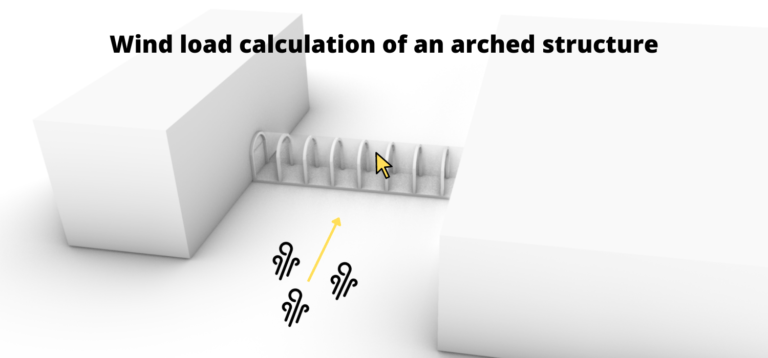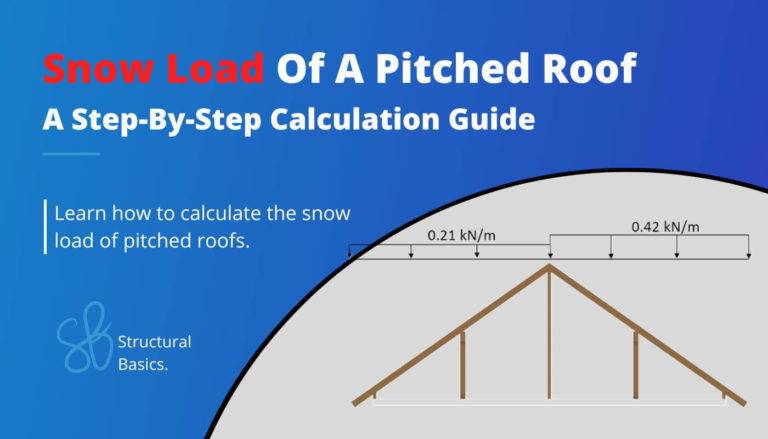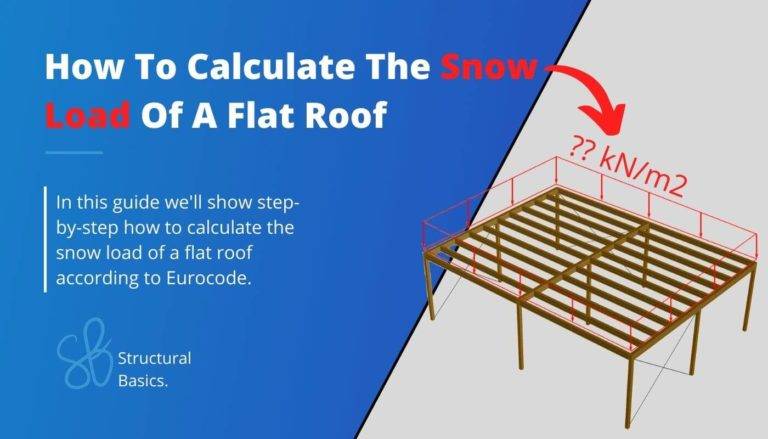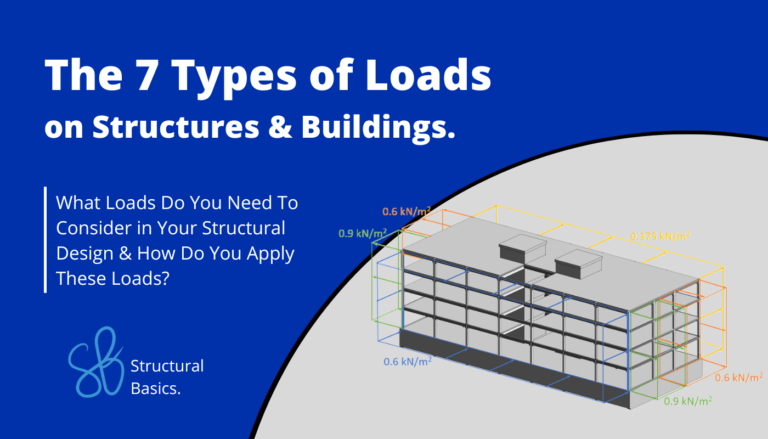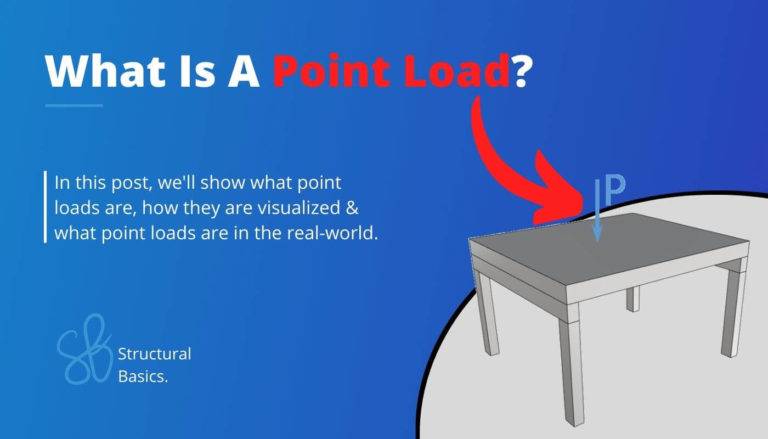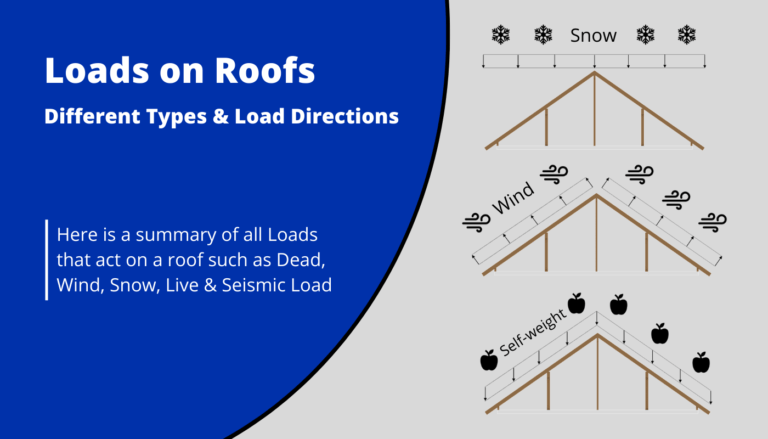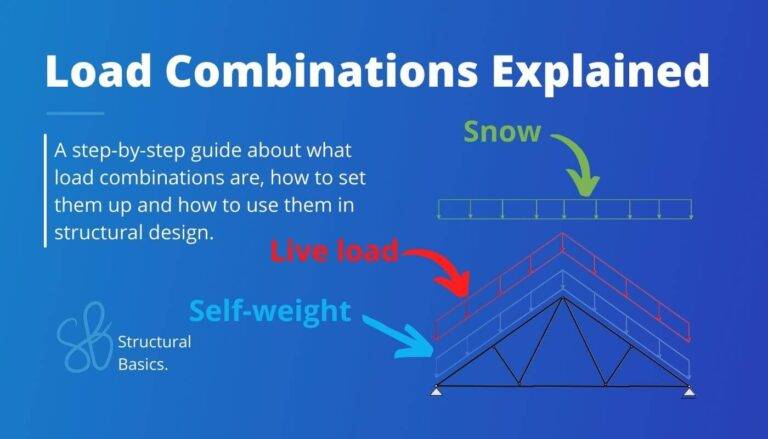
What Are Loads?
Structural loads are the representation of actions/influences on structures that are caused by nature, humans, machinery etc and the structural elements must be designed to withstand those actions. In general, the most used loads when designing a building are:
- Dead load (self-weight)
- Live load
- Wind load
- Snow load
- Seismic load
- Earth pressure
- Imperfection
- Accidental loading
-
Dead Load – What Is It And How To Calculate It?
Learn what the dead load is, how to calculate it and how to apply it to different static systems.
-
Live load – all you need to know
Learn what the live load is, where and how it is used, and what values are used for the different categories.
-
How To Calculate The Peak Velocity Pressure {2025}
Before calculating the wind loads, the peak velocity pressure needs to be calculated. In this guide, we show how to do that.
-
Wind Load Calculation On Walls [A Beginner’s Guide]
The horizontal wind loads are an essential part of the structural design of a building. In this guide, you’ll learn how to calculate them.
-
How To Calculate The Wind Loads Of A Flat Roof [2025]
The vertical wind loads on flat roofs are an essential part of the structural design of the roof. In this guide, you’ll learn how to calculate them.
-
Wind Loads On A Pitched Roof {A Structural Guide}
The wind loads on a pitched roof are an essential part of the structural design of the roof. In this guide, you’ll learn how to calculate them.
-
Wind load calculation on an arched roof (Example)
After we have already covered the wind velocity, wind loads on walls, flat roofs and pitched roofs, this time we calculate the wind load for – a structure most structural engineers probably do not work…
-
Snow Load Calculation Of Pitched Roofs {Step-By-Step Guide}
The snow load is an important part of any structural design. Every building needs to resist the snow load. In this blog post, I show you, step-by-step, how the characteristic snow load of a pitched…
-
How To Calculate The Snow Load Of A Flat Roof {2025}
The snow load is a crucial parameter in every structural design. In this step-by-step guide, we’ll show how to calculate the snow load for flat roofs.
Here’s an overview article about all loads used for buildings
-
The 7 Types of Loads on Structures & Buildings (Practical Guide)
Learn what loads act on structures and buildings and how to apply them (Dead, snow, live load + 4 more).
In structural design, different load types are used depending on the element and the load itself. We differentiate between:
- Area load (on slabs, walls, facades, etc.)
- Line load (on beams, columns, frames, etc.)
- Point load (on columns, beams, etc.)
- Others like triangular load
-
Uniformly Distributed Load [All YOU Need To Know]
In this guide we’ll show, what a uniformly distributed load is, how it’s visualized in engineering, real-world examples and much more
-
Point Loads: What They Are and How to Calculate Them
In this guide we’ll show, what a point load is, how it’s visualized in engineering, real-world examples and much more.🚀🚀
Load direction
The snow load is applied differently on a rafter roof than the wind load. Learn in this guide how to apply snow, wind, live and dead load on structural elements.
-
5 Loads On Roof Structures
Learn what loads act on roofs, how to calculate them & how they are applied on the structure (Dead load, wind load + 3more).
What Are Load Combinations?
-
What Are Load Combinations And How To Calculate Them?
Learn the basics of load combinations and how they are used in structural engineering to ensure the strength and safety of a building or structure. Discover the different types of loads considered, common load combinations, and their impact on the structural design.
